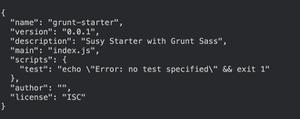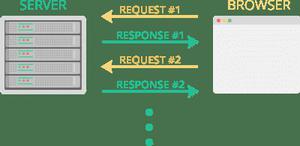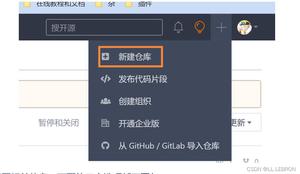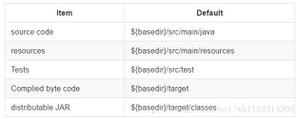springboot之@Conditional和@ConditionalXXX

spring boot 最让我们惊艳的特性应该就是自动配置。当从你引入了spring-boot-starter-xx那一刻开始,spring boot 在后面就为我们做了很多工作,具体整个流程是怎么组织的,我们以后再说。今天我们就来看下spring boot 中的一个决定bean或者配置类能否被注入容器的关键注解@Conditional。
@Conditional--条件注解。我们看下这个注解的定义
@Target({ElementType.TYPE, ElementType.METHOD})@Retention(RetentionPolicy.RUNTIME)
@Documented
public @interface Conditional {
/**
* All {@link Condition Conditions} that must {@linkplain Condition#matches match}
* in order for the component to be registered.
*/
Class<? extends Condition>[] value();
}
可以看到这个注解可以使用在类和方法上。一般情况情况下我们不直接使用这个注解,而是使用@ConditionalOnXXX(例如@ConditionalOnBean)。那么@ConditionalOnXXX和@Conditional有什么关系呢。实际上@ConditionalOnXXX主要是利用了spring 的注解的派生性质(暂时没找到更好的术语)。什么是注解的派生性呢,就是@ConditionalOnXXX 具有@Conditional的特性但是又可以有自己的独特的特点。
spring boot 中都提供了哪些条件注解给我们使用呢
Class Conditions
- @ConditionalOnClass
@Bean @ConditionalOnClass(name = "com.google.gson.Gson")
public OrderTest orderTest(){
OrderTest orderTest = new OrderTest();
System.out.println("因为引入了gson,所以初始化");
return orderTest;
}
因为classpath中含有了Gson类,所以会初始化。注意注解中value 与 name 的区别
- @ConditionalOnMissingClass
@Bean @ConditionalOnMissingClass(value = "com.google.gson.Gson")
public OrderTest orderTest2(){
OrderTest orderTest = new OrderTest();
System.out.println("因为没有引入了gson,所以初始化");
return orderTest;
}
因为classpath中没有Gson类,所以会初始化。
Bean Conditions
- @ConditionalOnBean
@Bean @ConditionalOnBean(type = {"com.google.gson.Gson"})
public OrderTest orderTest3(){
OrderTest orderTest = new OrderTest();
System.out.println("因为容器中有gson,所以初始化");
return orderTest;
}
- @ConditionalOnMissingBean
@Bean @ConditionalOnMissingBean(type = {"com.google.gson.Gson"})
public OrderTest orderTest4(){
OrderTest orderTest = new OrderTest();
System.out.println("因为容器中没有gson,所以初始化");
return orderTest;
}
注意的是与Class condition的区别,一个是类路径中是否包含一个是容器中是否包含。
Property Conditions
- @ConditionalOnProperty
@Bean @ConditionalOnProperty(prefix = "test.auto.login",name = "aop",havingValue = "YES")
public OrderTest orderTest4(){
OrderTest orderTest = new OrderTest();
System.out.println("当属性值等于YES时才会注入");
return orderTest;
}
当环境变量中的test.auto.login.aop=YES时才会注入。这就给我们很多的操作空间,定义start组件时,可以把是否注入的决定权交给使用方。
SpEL Expression Conditions
- @ConditionalOnExpression
@Bean @ConditionalOnExpression("#{"YES".equals(environment["test.auto.login.aop"])}")
public OrderTest orderTest4(){
OrderTest orderTest = new OrderTest();
System.out.println("当属性值等于YES时才会注入");
return orderTest;
}
比较高级是这个玩意支持SpEL表达式,换句话说就是能够让你支持更加复杂的逻辑判断
Resource Conditions
这种不经常使用,这里就不说了
Web Application Conditions
这种也不经常使用,这里也不说了
关于条件注解的用法就说到这里,为什么我们在条件注解中给出一些值,框架就能帮助我们自动判断是否需要注入呢。我们可以看下每个注解的实现
各种条件注解的实现
- @ConditionalOnClass
@Target({ ElementType.TYPE, ElementType.METHOD })@Retention(RetentionPolicy.RUNTIME)
@Documented
@Conditional(OnClassCondition.class) // 关键在于这个
public @interface ConditionalOnClass
- @ConditionalOnBean
@Target({ ElementType.TYPE, ElementType.METHOD })@Retention(RetentionPolicy.RUNTIME)
@Documented
@Conditional(OnBeanCondition.class)//关键也在这里
public @interface ConditionalOnBean
- @ConditionalOnExpression
@Retention(RetentionPolicy.RUNTIME)@Target({ ElementType.TYPE, ElementType.METHOD })
@Documented
@Conditional(OnExpressionCondition.class) //关键逻辑
public @interface ConditionalOnExpression
其他的就不列举了,通过这三个典型的注解,可以看到,真正让条件注解能够实现的就在于OnXxxx.class,下次再分析这个类都干了什么
以上是 springboot之@Conditional和@ConditionalXXX 的全部内容, 来源链接: utcz.com/z/515473.html









